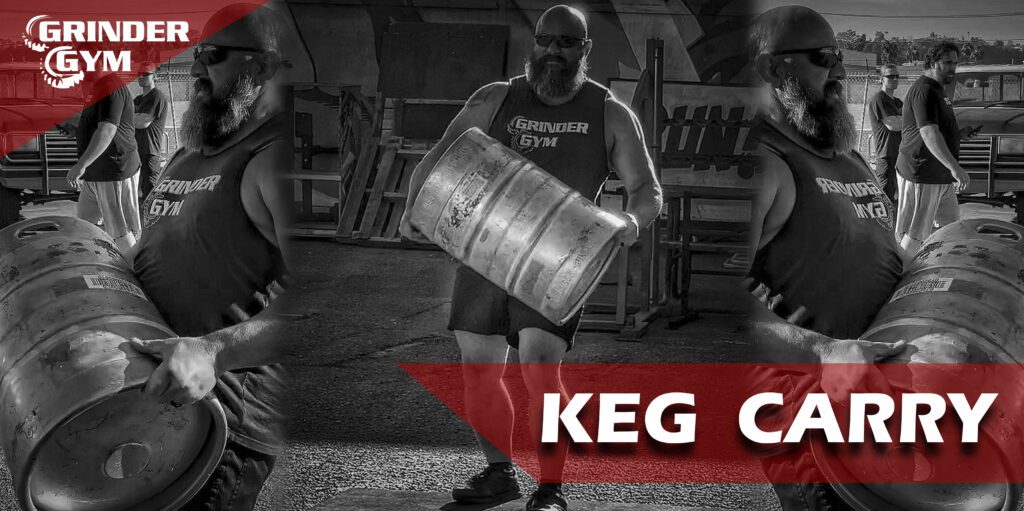
The Keg Carry, a prominent component of strongman competitions, involves contestants lifting and transporting heavy kegs over a designated distance. Athletes hoist these weighty barrels onto their shoulders or in their arms and swiftly navigate the course, showcasing not only their raw strength but also their agility and endurance. This challenging event tests participants’ ability to manage and move bulky objects, requiring both physical power and speed in order to cover the distance efficiently, adding an exciting and demanding element to strongman competitions.
Keg Carry: (MAX DISTANCE)
- One attempt for max distance.
- No time limit. Once the implements are dropped the attempt is finished.
- The course may be straight or have turns.
- Keg Implement: May come in typically 3 sizes, but the typical keg shown is most commonly used in the keg carry. There are companies that have build a loadable “keg like” implement.
- The implements start on the ground. The athlete may be allowed to grip the implement before the start command is given. The implement must remain in contact with the ground and behind the starting line until the start command is given.
- No throwing, rolling or sliding will be permitted. Distance will be measured from point of contact, not where the implement ends up.
- Equipment Allowed: Belt, Chalk, Knee wraps or sleeves, wrist wraps,
- Equipment NOT Allowed: Tacky, lifting straps or hooks.
Keg Carry: 100 FT STRAIGHT COURSE
- One attempt.
- 100’ straight course.
- There may be a 60 second time limit.
- You may set the implements down once throughout the course. On the second set down distance will be measured.
- Keg Implement: May come in typically 3 sizes, but the typical keg shown is most commonly used in the keg carry. There are companies that have build a loadable “keg like” implement.
- The implements start on the ground. The athlete may be allowed to grip the implement before the start command is given. The implement must remain in contact with the ground and behind the starting line until the start command is given.
- No throwing, rolling or sliding will be permitted. Distance will be measured from point of contact, not where the implement ends up.
- Equipment Allowed: Belt, Chalk, Knee wraps or sleeves, wrist wraps,
- Equipment NOT Allowed: Tacky, lifting straps or hooks.


